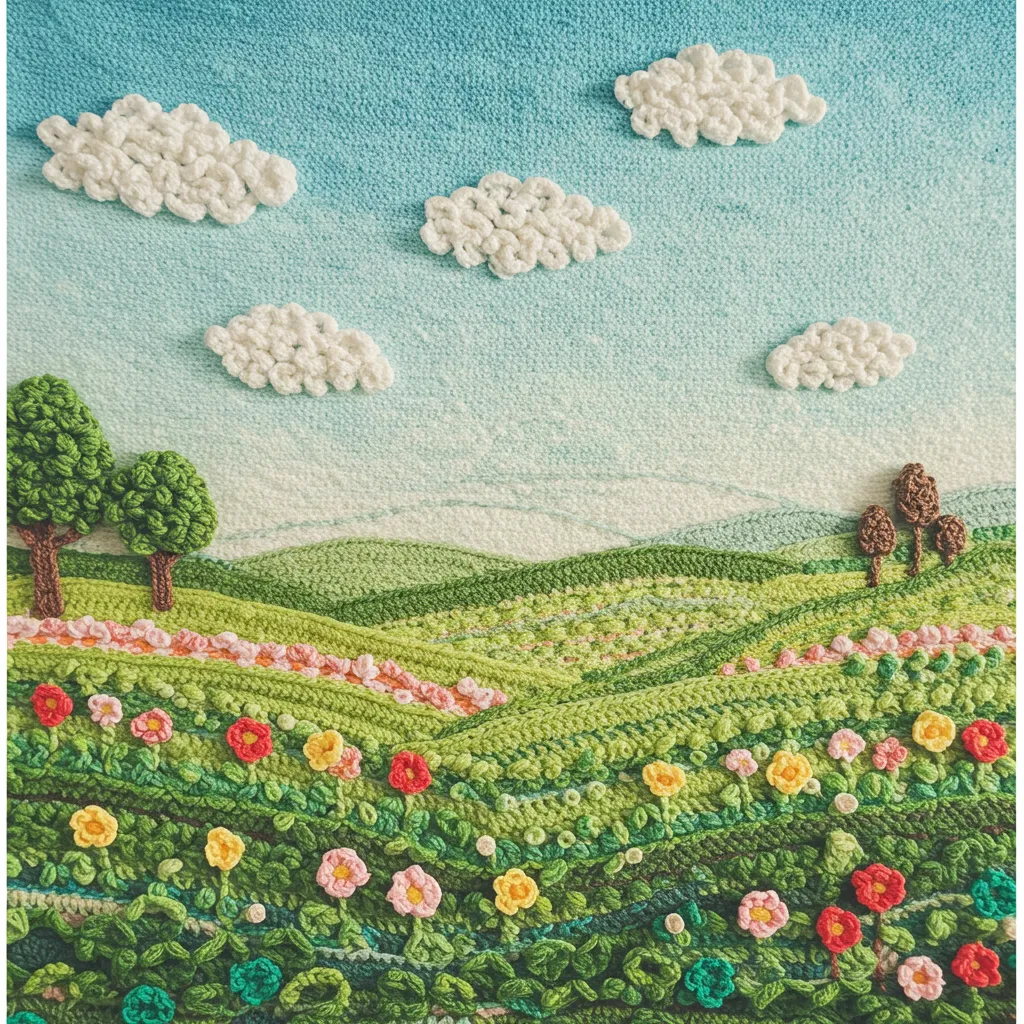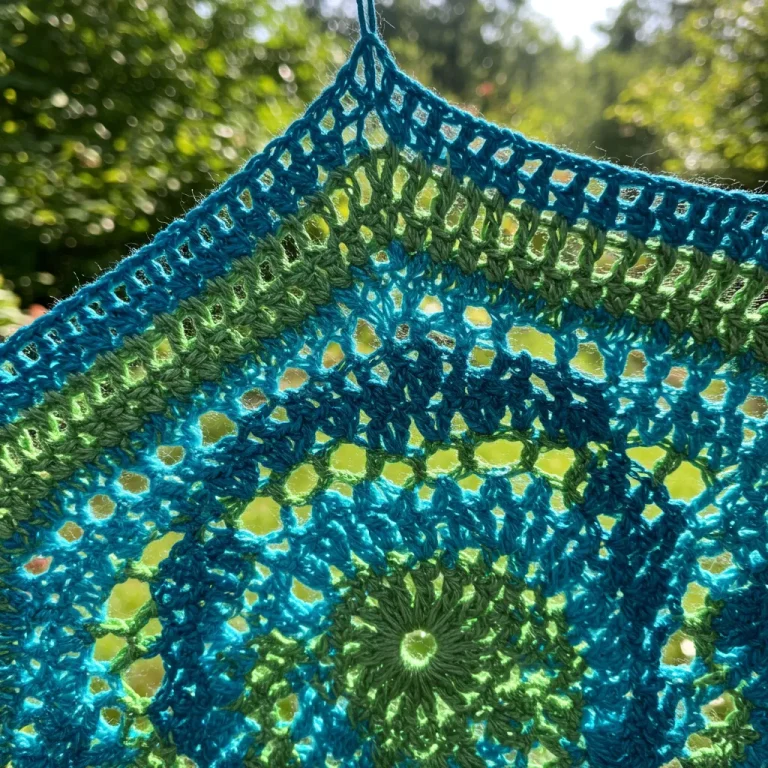Crochet, once viewed as a quaint, home-spun craft reserved for cozy winter afternoons or grandmothers’ knitting circles, has re-emerged as one of fashion’s most unexpected and beloved trends. From haute couture runways to street style, crochet garments are now a prominent fixture, offering a unique blend of creativity, texture, and nostalgia. But how did crochet evolve from humble hobbyist origins into a global fashion phenomenon? Let’s take a journey through the history of this craft and discover how it made its mark in the fashion world.
Early Beginnings: A Craft Rooted in Tradition
The origins of crochet are somewhat murky, with historians debating whether it originated in Europe, Asia, or the Middle East. While the technique itself is centuries old, crochet as we know it today began taking shape in the 19th century. Initially, crochet was not seen as a fashionable pursuit; rather, it was used for practical items like lace, doilies, and bedspreads. In fact, crochet was often seen as a more affordable alternative to delicate lacework, which was typically handwoven by artisans.
The first major leap into fashion occurred during the Victorian era, where crochet lace was used to embellish clothing, particularly in the form of collars and cuffs. As the craft evolved, it continued to be used in textiles, but it was not yet viewed as a design statement. However, its role was about to change.
The 1960s and 1970s: Crochet Meets Counterculture
The turning point for crochet in fashion came during the 1960s and 1970s, a time when the world was buzzing with social change, artistic expression, and an explosion of new styles. This was the era of the flower child, the bohemian lifestyle, and the hippie movement — all of which embraced handmade and DIY culture. Crochet, with its earthy, tactile qualities, became a symbol of this rebellion against mass production and commercialism.
Designers like Missoni and Yves Saint Laurent played a pivotal role in bringing crochet into the mainstream. In particular, Missoni, known for its colorful and geometric knitwear, experimented with crochet techniques in the creation of vibrant, textured garments that caught the attention of high fashion. Crochet was no longer just a casual craft; it was now a form of artistic expression on the runway.
During this time, the crochet bikini became a must-have summer item, epitomizing the carefree and free-spirited vibe of the ‘70s. The crochet halter top, in particular, became a staple of beachwear, making crochet not only fashionable but also synonymous with a laid-back, boho-chic aesthetic.
Revival in the 2000s: Craft Meets Couture
While crochet took a step back in the 1980s and 1990s, it never disappeared from the scene entirely. It remained a part of the fashion world, particularly in niche and alternative circles. However, the 2000s saw a resurgence, as a growing interest in sustainability and the revival of artisanal craftsmanship led to an appreciation for handmade techniques. Crochet found itself reinterpreted by high fashion designers, who began incorporating it into their collections in fresh and innovative ways.
One of the key moments in the revival of crochet came when Italian designer Alberta Ferretti showcased intricate crochet designs on the runway in her Spring/Summer 2007 collection. Her pieces were full of texture, incorporating delicate crochet lace into feminine, ethereal silhouettes that were perfect for spring and summer wardrobes. The collections by Chloé, Louis Vuitton, and Stella McCartney followed suit, incorporating crochet into their own high-end lines, solidifying crochet’s status as both an art and a fashion statement.
The resurgence of vintage-inspired fashion also played a major role in crochet’s comeback. As the 2000s saw a rise in interest for 1960s and 1970s styles, the crochet aesthetic naturally fit into this trend, as it was a prominent feature in the wardrobes of icons like Jane Birkin and Brigitte Bardot.
Modern Day Crochet: A Global Trend
Today, crochet is firmly entrenched in fashion, making its mark across all facets of the industry. From the runways of Paris and Milan to streetwear in New York and Tokyo, crochet has become a versatile material used in everything from dresses and tops to accessories like bags and shoes. Fashion houses and independent designers alike have embraced crochet’s tactile, artisanal qualities, with many designers exploring modern techniques and styles that push the boundaries of the craft.
Crochet’s revival can also be attributed to the growing movement toward sustainability in fashion. With consumers becoming more conscious of fast fashion’s environmental impact, the slow, handmade nature of crochet resonates with those looking for more sustainable and ethical choices in clothing. Many fashion brands now highlight their use of crochet as part of their commitment to craftsmanship, sustainability, and reducing waste.
Social media platforms like Instagram and Pinterest have also fueled crochet’s rise, with countless influencers and makers sharing their unique crochet creations. The DIY aspect of crochet, combined with the accessibility of online tutorials, has led to an explosion of crochet enthusiasts, ranging from seasoned crafters to beginners eager to try their hand at this age-old technique. Brands like Free People and Anthropologie have capitalized on this trend, releasing crochet-laden collections that appeal to a new generation of fashion-forward individuals.
The Versatility of Crochet in Fashion
What makes crochet so appealing is its endless versatility. It can be light and airy, as seen in crochet beach cover-ups and summer dresses, or thick and textured, as seen in cozy sweaters and scarves. It can range from the intricate, delicate lace patterns of vintage designs to the bold, geometric motifs seen in contemporary fashion. The beauty of crochet lies in its ability to adapt to both casual and sophisticated styles.
Crochet’s connection to the handmade, its tactile texture, and its cultural history all contribute to its timeless appeal. Whether as a statement piece on the runway or a summer beach essential, crochet adds a layer of artistry and individuality to any outfit. With its warm, inviting nature, it’s easy to see why crochet continues to thrive in fashion today.
Conclusion: A Craft Reborn
The rise of crochet in fashion is a story of revival, reinvention, and transformation. From its humble beginnings as a domestic craft to its high-fashion renaissance, crochet has carved out its place in the ever-evolving world of style. As the fashion industry continues to embrace sustainability and authenticity, crochet stands as a symbol of both tradition and modernity — a craft that has woven itself into the very fabric of fashion, proving that even the most traditional techniques can find new life in the hands of creative visionaries.
Whether you are drawn to its vintage allure or its modern-day interpretations, there is no doubt that crochet will continue to play an important role in the future of fashion, one stitch at a time.




